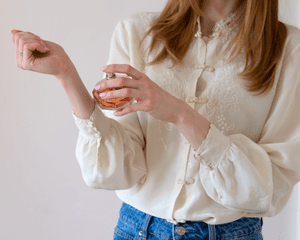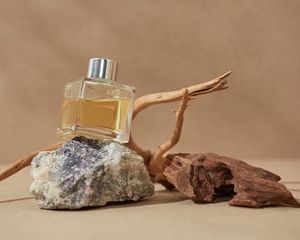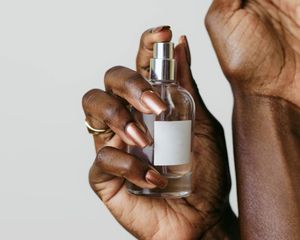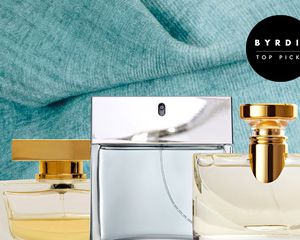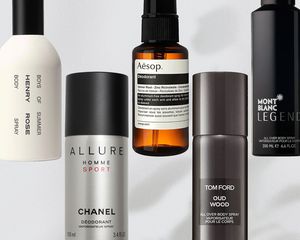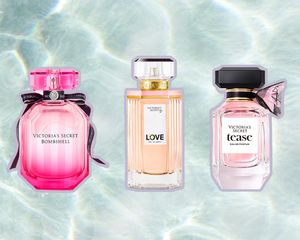:max_bytes(150000):strip_icc()/JoMalone_BuildFragranceCollection_Lead-1b73042af6d24a6cad193beed347e999.jpg)
Stocksy
Building a fragrance collection is both fun and also complicated. How to navigate the myriad scents on the market when there are simply so many from which to choose? And what's the best way to settle on a signature scent? Fortunately, building a fragrance collection ensures you get to add to your collection with time and allow your preferences to evolve.
The task might sound a little daunting at first, especially if you lack an expert understanding of fragrance vocabulary. To ease the process, we've tapped perfumers at the top of the fragrance game to help break down the ins and outs of perfume lingo and share tips on how to build a fragrance wardrobe to include everything from cult favorites to big-box brands.
Meet the Expert
- Douglas Little is the founder and perfumer for Heretic Parfum, a line of handcrafted artisanal fragrances.
- Linda Sivrican is a perfumer, formulator, and the founder of Capsule Parfumerie, a line of independent, niche fragrances.
- Joan Tanis is the national training and events director at Maison Francis Kurkdjian.
Keep reading for expert tips on how to build a fragrance collection.
Learn the Fragrance Categories
More likely than not, you'll be choosing between two types of fragrance categories, eau de toilette (EDT) and eau de parfum (EDP). The distinction between EDTs and EDPs has to do with the concentration of materials, which will affect the longevity of your fragrance. "EDPs are more concentrated in raw materials and therefore are more intense and longer wearing," explains Tanis. Subsequently, they're more expensive. On the other hand, Tanis notes that "EDTs are less concentrated and have a shorter fragrance trail life, but this can vary from skin to skin." EDTs are usually less expensive than EDPs.
When it comes to selecting between an EDT or EDP, consider what type of fragrance you're buying —synthetic or natural (note: Many big-box fragrances are synthetic, while independent lines tend to be natural). "For natural fragrances, I would recommend an EDP," advises Little. "You will want the concentration of raw materials to give you the longevity and sillage [the trail the fragrance leaves behind]. With synthetic-aroma chemicals, I love an EDT. I find synthetic-aroma chemicals to be very overbearing and at times just too much. EDTs are far less concentrated and therefore easier to wear and less headache-inducing."
Sivrican agrees that it's nice to have both EDP and EDT options when building a fragrance wardrobe. She also suggests building a collection "made of colognes, parfums, face mists, and scented hair and body oils."
Gain an Understanding of Fragrance Notes
Perfume formulators break a fragrance down into notes, which affects the way you experience a fragrance's scent. There are three notes: top, middle (or heart), and base (or dry down notes). Below, Tanis explains:
· Top notes are the first scent you smell when the fragrance is exposed.
· Middle notes give the fragrance character and intensity.
· Base notes ground and balance the fragrance, providing depth to the fragrance.
She says to think of this composition like a pyramid, which is a helpful analogy: "All the notes in a fragrance are comprised in an olfactive pyramid. The pyramid is a composition of a fragrance. The composition is made up of notes or ingredients that unite the scent."
When you're selecting a fragrance, look for a description of each note to help you understand how you will best experience its scent.
Trust Your Intuition
Finding your signature scent is truly a subjective experience. That said, you can go about finding scents for your wardrobe systematically, even if that means turning inwards and listening to your intuition. To begin, Little suggests doing a little scent-oriented self-inventory. "Truly and unapologetically ask yourself the question, What is attractive to YOU? Finding the scent that attracts you is so personal, subconscious, and cerebral it may evade even the most curious."
Byrdie Tips
When it comes to finding your scent, Little says, "My advice is to stick your nose in every crevice and see what flips your switch."
Ask Yourself What Mood You Want to Convey
Secondly, think of fragrance as something that, as Little suggests, "accentuates your mood." As such, fragrance (and more specifically, its key ingredients) is "an invisible and indispensable piece of wardrobe." The perfumer encourages people to conceive of fragrance as "personalities." So, how do you best understand fragrance personalities? It all comes down to how a scent makes you feel. "There are some personalities that accentuate, some that are disruptive, and others that are shy and reserved," explains Little.
Purchase What Moves You
Finally, to figure out if a scent attracts you, think about the following. "If it evokes a sense of delight, excitement, wonderment, or nostalgia," says Sivrican, you should snag the fragrance. "If you've tried it on and haven't purchased it and you keep thinking about it, buy it because it's calling you and you'll regret it if you don't," she says.
Byrdie Tips
Sivrican says, "It can be interesting to wear different scents on different parts of your body."
When it comes to layering scents, you should consider a couple of variables, and of course, your overall olfactory philosophy. One major consideration is how the fragrance line was created. For instance, Little explains that he created the Heretic Parfum line "with 100% naturally derived materials, which makes them perfect for layering." He adds, "I built the collection so you can easily mix and match any of the fragrances to create beautiful, signature scents." Because his fragrances are made with only natural materials, they are "sheer, bright, and transparent," which makes them conducive for layering. Additionally, natural (non-synthetic) ingredients do not last as long as synthetic ones, so layering can increase the longevity of your scent.
Tanis notes that Maison Francis Kurkdjian fragrances can be layered and combined, though "they are not created with this intention. The Kurkdjian fragrances are meant to be worn on their own." She personally does not recommend fragrance layering, saying, "Fragrances should all be different, just like the clothing in your wardrobe." In the end, it's up to the individual wearer to decide.
Purchase Fragrances as Souvenirs
When shopping for a fragrance wardrobe, you might rethink the notion of a signature scent. Says Tanis, "Consumers have outgrown signature scents and wear fragrances appropriate to the occasion, event, or activity. Modern men and women desire an olfactive or fragrance wardrobe, rather than one fragrance."
Sivrican suggests you buy a "new fragrance whenever you're traveling somewhere different. You'll always remember the place and time you visited whenever you smell it."
And when shopping online, it helps to have an understanding of the language of fragrance, so you can break down reviews and descriptions. "Reviews from fragrance blogs can be very helpful because some of these bloggers really understand how to explain notes," explains Sivrican. "Sometimes another person's point of view can help you decide on a purchase or, at the very least, introduce you to something you may not have considered. Whenever possible, sample it if the brand offers it," she says. Plus, when shopping online, you can visit sites like MicroPerfumes to order samples before you commit to a full-size bottle. Or, subscribe to a monthly perfume subscription service to help you dial in your preferences.
Takeaway
The more you live in, and with, a fragrance, the more you come to appreciate its potential to unlock moods and memories, and contribute to your overall sense of well-being. Rules can be helpful in understanding the chemical composition of a fragrance as well as the different types of categories of scents, but once you have a working knowledge of the vocabulary, the most important thing when building a fragrance wardrobe is to follow your intuition.
